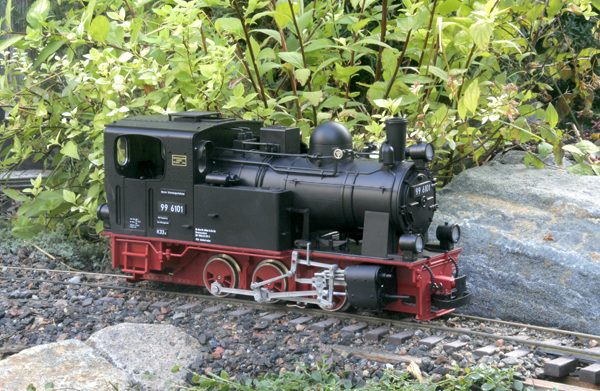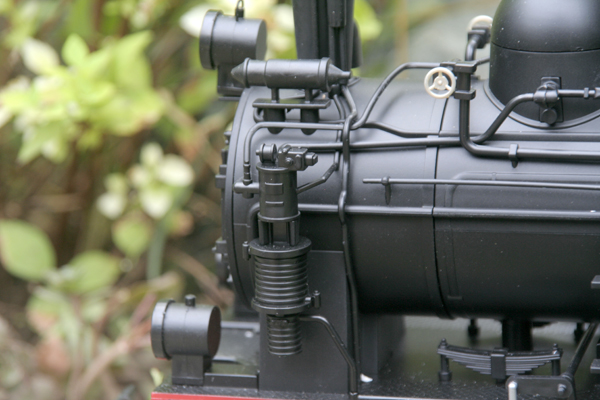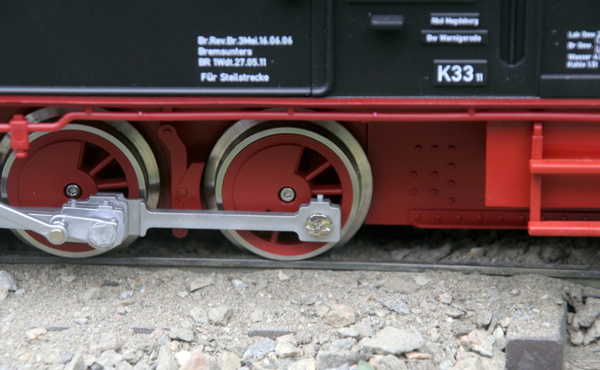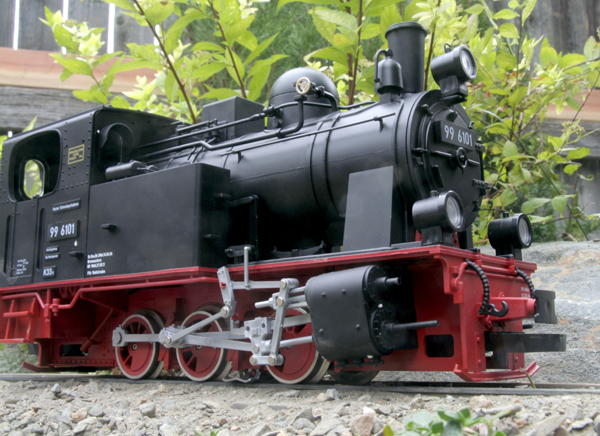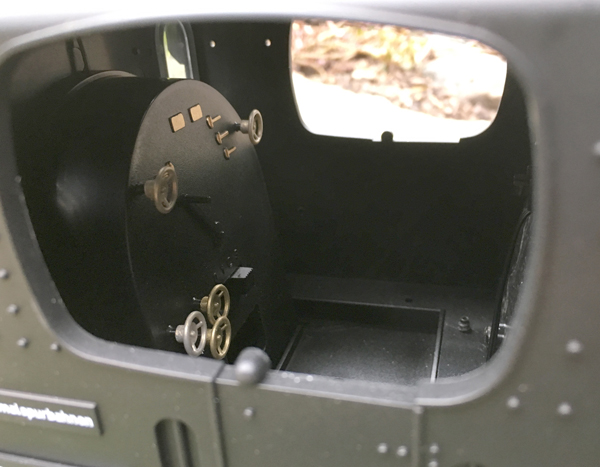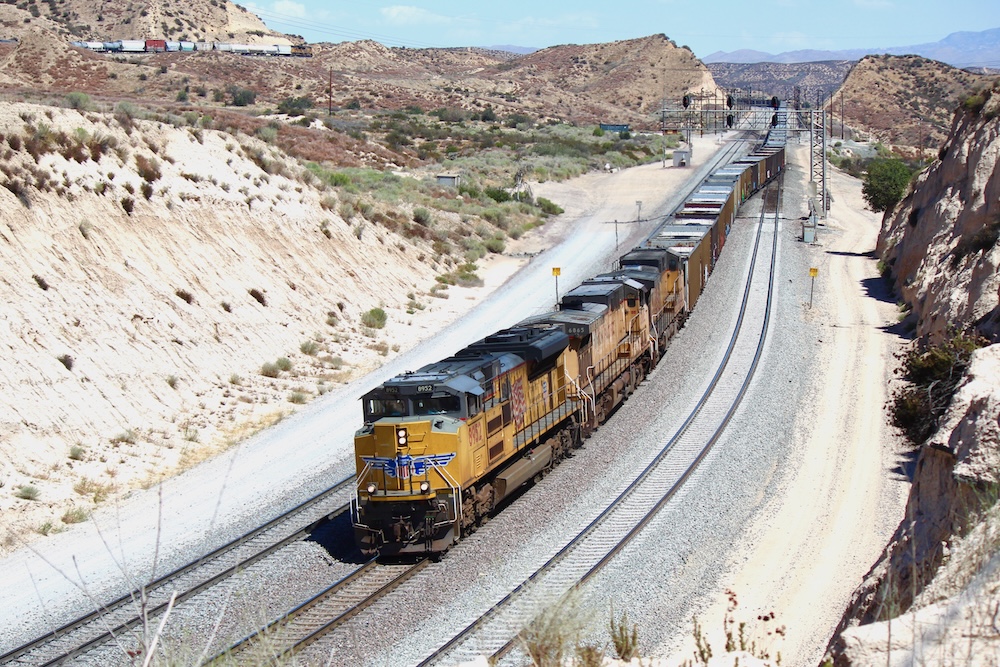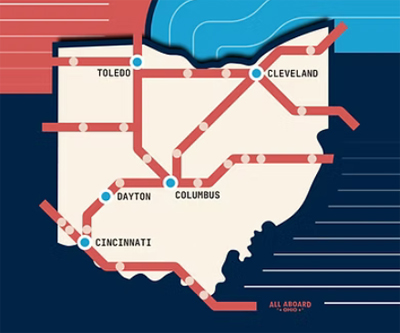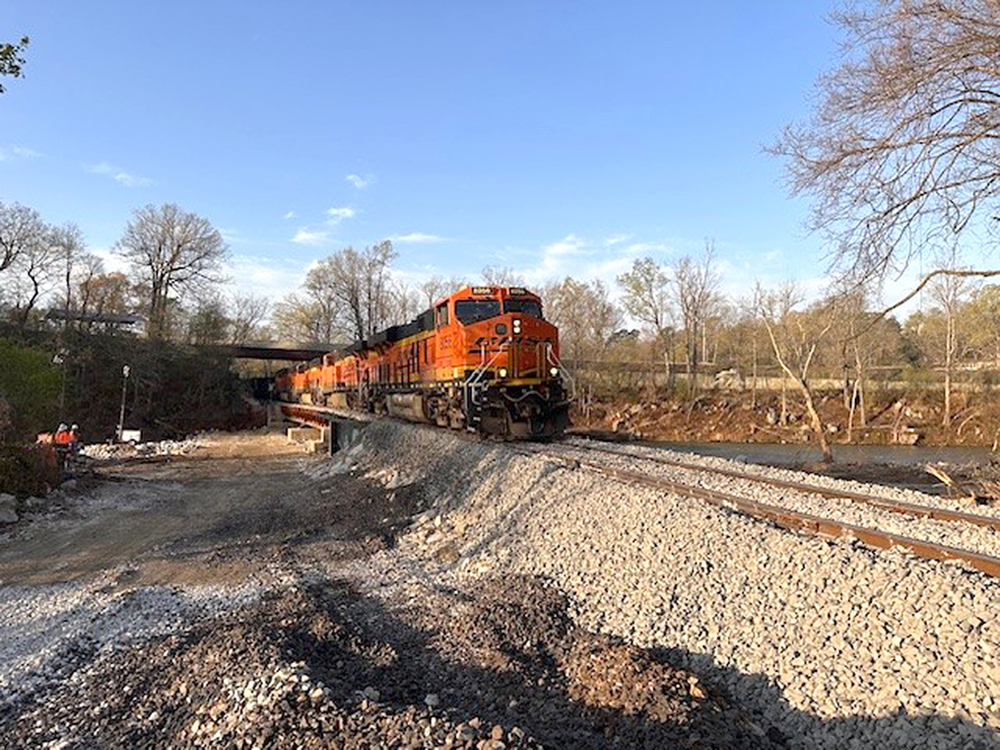TrainLine
Made in Germany
Available from:
Train Li
3 Kensington Way
Upton MA 01568
Prices: $945 (analog DC); $1,145 (DCC)
Website: www.trainli.com
Mostly plastic steam-outline 0-6-0T; plastic side rods and valve gear; power pickup from all wheels plus skates; working headlights and cab light; available as analog DC or DCC; includes sound. Dimensions: length, 131/4″; width, 43⁄8″; height, 61/2″. In 1:22.5 scale, this works out to 24’10” x 8’2″ x 12’2″, respectively
Pros: Smooth operation; well-detailed; crisp graphics
Cons: Plastic pins holding drive rods to wheels may pop off; steam chuff sound cuts out suddenly when slowing
TrainLine’s latest locomotive is a model of the Nº 99 6101. The locomotive is offered in two versions: traditional analog DC control and DCC equipped. The DCC-equipped locomotive was sent to us for review.
I couldn’t readily locate measured drawings for this locomotive, but Wikipedia provided basic dimensions for the prototype. This 1:22.5-scale model measures accurately in length, width, and height. There is lots of detail (some fragile and easily broken—two lights broke loose in shipping), and the lettering is crisp, with even the finest print easy to read. Everything seems to match photos of the prototype that I found online. Detail on the boiler backhead is minimal (a few dials) but the cab is not that open, so it’s difficult to see in anyway. No engineer figure is included. The locomotive comes with a few small add-on details, an extra hook for the front coupler (if you desire it), and a bag of crushed coal for the coal bunker on the side of the locomotive.
The locomotive collects power from all six wheels as well as two skates. One driver has a traction tire. The engine is designed to operate around a 2′-radius curve (4′-diameter), and does so without difficulty. Wheels measure 1.560″ back to back, which is within NMRA tolerances. Lights are directional and there is a smoke unit. The valve gear is plastic but appears sturdy and flexible enough to withstand abuse. I do lament TrainLine’s use of plastic pins to hold the side rods onto the wheels.
While testing the locomotive, one of the pins broke free and launched itself into a parallel universe. I replaced it with a screw from my parts drawer.
The locomotive has a three-position switch on the boiler backhead. According to the instructions, the first position (“0”) isolates the locomotive entirely from the track; position “1” turns on lights and smoke only; position “2” turns everything on. In this DCC-equipped locomotive, the switch didn’t work as described. Position “0” isolates everything from track power; positions “1” and “2” turn everything on—there’s no difference between those two settings. The DCC-equipped loco has a Zimo sound and motor-control decoder built in. The analog version does not. The DCC-equipped locomotive will run on analog DC (more on that in a bit). The Zimo decoder is rated at 4 amps continuous, 10 amps stall, which is more than adequate for this locomotive.
I set the locomotive on the track and powered up my MRC command station. The locomotive sat quietly. I set the controller to locomotive #3 (factory default), and bumped the throttle up one notch. The locomotive began to quietly and slowly inch its way forward. The Zimo decoder controls the motor speed via the motor’s BEMF, so putting a bit of drag on the drawbar caused the locomotive to increase power to maintain a constant speed. It did not, however make any sound! Apparently the Zimo decoder defaults to having the sound turned off when it’s first powered up. You must press the “F8” button in order to activate the sounds. (More about the sounds below.) With the sounds going, the locomotive ran pretty much as I expected. The motor is powerful and it took a lot to get it to stall. Stalled, the locomotive drew around 3 amps. At full slip, the locomotive drew around 1 amp. It developed 1.5 pounds of drawbar pull.
The locomotive runs well under analog DC control. I ran it on both pulse-width modulation (PWM) and linear DC. Most DCC decoders don’t like PWM but the Zimo decoder worked like a charm! I bumped up the throttle just a little bit: the lights came on, the whistle blew, and the locomotive took off down the track. Performance on PWM and linear was identical. Very slow speed control was not quite as good under DC as it was under DCC but, unless you’re doing a lot of switching and running very slowly (less than 5 scale mph), you’re not going to notice. Because it’s running on analog track power, though, the sound does cut out when the throttle is turned nearly all the way down, and the lights turn off.
Top speed on the locomotive behaves differently, depending on whether it’s running on DCC or DC. When I ran the locomotive with my MRC command station, the top speed was a mild 18 scale mph. The MRC outputs around 15V to the rails. I hooked up a Piko command station, which puts out around 20V to the rails. Top speed was still right around 18 scale mph. Under analog DC control, at 14V, top speed was similarly around 18 scale mph but, at 20V, the top speed jumped to 34 scale mph. None of this is unprototypical for this locomotive but it behaves differently than other DCC-equipped locomotives I’ve reviewed
when running on analog track power.
Sounds on the locomotive are good, and faithfully reproduce the sounds of a German narrow-gauge engine. The speaker (located in the boiler) has a good amount of bass to it. The DCC decoder offers a wide array of sounds, ranging from conductor signals, shoveling coal, blowdown, air pump, and more, with most triggerable from the function keys on the controller. Under analog DC control, you get the whistle at start and the chuff, but the other sounds cannot be triggered.
One really cool thing is the volume control. The top of the sand dome is actually a volume-control knob! You’d never know it to look at the locomotive, but I love having the ability to adjust the volume easily without needing to remember which CV controls volume (plus you can’t use CVs to adjust the volume in analog DC anyway).
Having said that, I tend to be something of a purist when it comes to sound, and there were a few curiosities with this decoder. One of the features of this and other modern DCC decoders is that the chuff changes volume in response to changes in the throttle. When you accelerate, the chuff gets louder. Decelerate, and the chuff quiets down. This is increasingly common on DCC decoders and the effect is cool. I noticed, however, that when decelerating, the chuff just cuts out abruptly, sometimes in mid-chuff. Sometimes you hear it dial back to a quiet chuff and then go away entirely but most of the time it was sudden and jarring to my ears.
(Curiously, this was less noticeable under analog DC control.) The decoder offers two whistles—a long and a short. I think the short whistle is still on the long side, with little difference between the long and short. I usually equate a “short” whistle to a quick “peep!” Finally, I noticed the generator sound gets louder as more lights are turned on (there are only two—the headlights and the cab light). The generator sound is always there, albeit quiet, whenever the sound is turned on. When I turn on the cab light, the generator sound gets a touch louder. Turn on the headlights, it gets louder still. A prototype steam generator will always be the same volume regardless of the number of lights it’s powering.
Overall, I think this locomotive is a winner. It’s compact enough for switching but looks equally good at the front of a fairly long string of cars. The motor control via the Zimo decoder is fantastic and the sound really adds to the package. If you’re a fan of European narrow-gauge steam, I think you’ll find this one a worthy addition to your roster.





